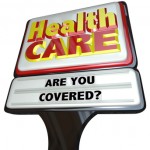Pennsylvania health insurance plans raised premiums for 32% of all applicants that bought medical coverage according to “HealthPocket,” a resource that ranks individual and family plans. The data was obtained by the HHS (Department Of Health And Human Services). More than 10,000 policies were used in the nationwide study that did not include persons that were eligible for Medicare or over age 65.
There are many reasons why prices were often higher than the original quote provided to the consumer. Of course, any discrepancies in the submitted application could impact the final premium. Some common examples would be missing medical information, conditions or medications that were not disclosed, and inaccurate statements regarding current or past treatment.
Although more than two out of three policies were issued at the quoted rate, Pennsylvania had the highest percentage of issued contracts that cost more than the original estimate. Other states closely behind were Indiana, Ohio, Virginia, Kentucky and South Carolina. Oddly four of the top six states are in very close proximity to each other. Senior Pa Medicare options were not included since there is no underwriting during Open Enrollment periods.
Quoting Mistakes Should Reduce
The number of misquotes should steadily decline, now that medical information is no longer used in the underwriting of Exchange policies during Open Enrollment. The only variables that could cause a misquote are misstatement of information on the application or the more likely miscalculation of the federal subsidy. Of course, the healthcare website of the government has had a history of miscalculations and providing erroneous information since many of its personnel have limited training.
The Federal Subsidy
The subsidy is based on your Modified Adjusted Gross Income (MAGI), and is typically estimated in advance for the year you need coverage. Thus, it is very easy to estimate quite a bit higher (or lower), based on last year’s information. Any variance can now be made up through a higher (or lower) refund when you file your taxes the following year. If your income significantly changes, you can change the amount of subsidy you are receiving by requesting an adjustment.

The top five companies that had the highest increased premiums were Anthem Health Plans Of Virginia, PacificSource, Blue Cross of Idaho, Blue Cross and Blue Shield of Florida and Rocky Mountain Hospital and Medical Service (Anthem BCBS). Premiums in these areas can vary depending on underwriting criteria for the specific carrier. Most insurers that have “Community rating,” (health conditions not taken into account) saw no variance in the quoted premium and the actual premium.
OK…So what does this mean? Are Pennsylvania insurers gouging the public? Absolutely not! With any underwritten product (life, auto, home, disability, long-term care etc…) your medical conditions, zip code, age and a few other factors determine the rate you pay. And since most policies now are NOT underwritten, calculating the most profitable premium to charge is much more difficult and dependent on many additional factors.
And it should. For persons with severe medical issues that can not qualify for a policy, there are options (Open Enrollments) that can be quite affordable. Remember…generally, only short-term plans are underwritten.
Enrollment in the State Risk Pools ended in 2013 since the new federal Marketplaces got ready for 2014 offerings (discussed below). Although there are still policies that require answers to medical questions, they are typically not compliant to the new legislation regulations. An example would be short-term contracts that are quite inexpensive and quickly approved. However, benefits are often capped and a deductible applies to most coverage.
Pa Health Exchange
All of these statistics merely became a forgotten moot point in 2014 when the Pennsylvania State Health Insurance Exchange opened for business. Don’t worry. You can still use this website to compare the most affordable quotes and apply for coverage. But since and all plans are “guarantee issue,” presumably 100% of all quotes will be accurate. Smoking will still cause an increase in prices. Typically, the increase is between 5% and 30%.
The variable is the amount of the subsidy applicants qualify for. For example, a young family of four living in the Pittsburgh area (parents both age 35) with an annual income of $40,000 will receive a subsidy of about $4,000 per year towards their premiums, which will result in an approximate monthly premium of about $165 per month for a very good Highmark Silver plan. “Cost-sharing” will reduce the out of pocket expenses to very manageable levels.
However, if their household income increases to $60,000, the subsidy reduces to about $1,000 resulting in a monthly premium of about $410. An $80,000 income would increase their premium to $495. These are based on the MAGI (Modified Adjusted Gross Income).
Higher Income Equals Lower Subsidies
The biggest injustice incurs at higher income levels. For example, A family of four (parents age 55) with a household income of $70,000 receives a subsidy of about $2,500. A bump in income to $94,000 eliminates all subsidies! It appears there we would be a reduced (perhaps slight) incentive to work, once a specific income level is reached. In fairness, these figures are estimates (although quite accurate) courtesy of the Kaiser Foundation. And different ages and sizes of the family will show different results.
How can you reduce or eliminate the possibility of an inaccurate quote on your Pa health insurance plan? During the application process, correspond with the broker (phone or email is fine) and allow them to review the application before submission. You will greatly improve your chances of the policy getting issued at the rate you expected.








